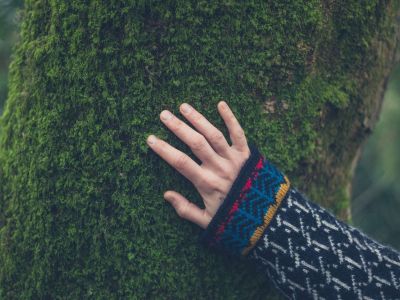For example, it is possible to examine the trees around you to determine a rough estimate of direction. Plant leaves can give you an idea of north and south. While navigating with plants may not be an exact science, you never know when this invaluable knowledge will come in handy. It could even save a life if someone is lost without a map or compass.
Natural Navigation Tips
Learn how to find your way with plants by unlocking the secrets of nature. The sun, wind, and moisture all influence plants, and the keen observer can pick up on these trends. Here are some natural navigation clues to help you decipher direction.
Trees
If you start paying attention to trees and how they grow, you will see they are not symmetrical. On the south side of trees, where they get more sunlight, branches tend to grow horizontally, and the leaves are more plentiful. On the north side, the branches reach upward toward the sun more vertically and leaves are sparse. This is more noticeable in an exposed tree in the middle of a field. In the forest, this phenomenon is not apparent because of the lack of natural light and competition for it. If you know what direction the prevailing wind blows in your country, you will notice the tops of trees are slanted in that direction. For example, in the U.S., wind often moves from west to east, so trees will show a slight uptick in that direction. This is apparent in deciduous trees but not in needled evergreens. Some trees, and plants too, have endured prevailing winds for many years, leaving its imprint.
Plants
Plants hold their secrets to the wind and sun as well. Some plants, not affected by buildings or trees, will vertically align their leaves, pointing from north to south to keep cool on a sunny day. By taking an assessment of several plants and confirming this pattern, it can help determine which way is north and south. In the Northern Hemisphere, if you see moss growing on a tree, it is often heaviest on the north side, because that side gets less sun and stays moist longer. The south side of the trunk may have moss, too, but not as much. To confirm, the south side should also have a stronger, more horizontal branching structure. Moss is not foolproof, so you should examine several trees and look for a pattern. Learning how to navigate with plants can be educational as well as useful. More of these types of “clues” can be found in books and Internet sites devoted to natural navigation.
